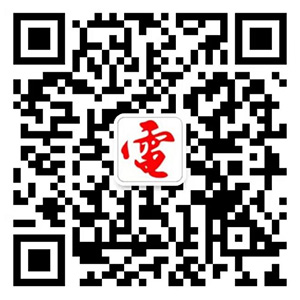Smartphone's foreground
With a price tag starting at $499, the sleek new Apple Inc. iPhone may seem prohibitively expensive to some, but Apple is counting on demand from consumers like Chuck Digate.
"Do the math," says the Boston-based software entrepreneur. Mr. Digate says he paid $350 for a video iPod last month and $300 for a smartphone from T-Mobile with a two-year contract. The iPhone "has all the things I'm using, and I can consolidate two devices into one."
While the fastest-growing segment for the wireless industry is low-end phones selling as low as $40 each, the market for high-end phones priced between $500 and $1,500 is also growing fast. In the high-end market, the iPhone, with its many features and fashionable design, will have special status.
The long-awaited iPhone allows users to download and play iTunes music, browse the Web and send email. Equipped with a wide screen and a two-megapixel camera, it can also use the faster Wi-Fi networks and talk to Bluetooth-enabled devices, such as headsets and stereo systems.
"It's a sizable market," says Albert Lin, an analyst at American Technology Research. "If Apple is aiming to sell 10 to 20 million units, that's a realistic and achievable goal." Steve Jobs, Apple's chief executive, said the company aims to sell 10 million iPhones through the end of 2008, which would account for about 1% of the annual global handset market.
But some analysts are skeptical, considering that the iPhone will be available only to Cingular Wireless customers and initially only in the U.S. It is scheduled to become available in Europe in the fourth quarter and in Asia in 2008. "Given the timing, geographies and the fact there is only one device, we think that two million devices could be sold in 2007 in the best instance," writes Nomura Securities analyst Richard Winsor in a report.
Most high-end cellphone customers are business users who are wealthy but also tech-savvy, says Mr. Lin. These people usually want to have access to the Internet and their email boxes all the time, as well as music and other entertainment functions. But there are also tens of millions of people who paid upward of $400 for Motorola Inc.'s RAZR before the prices went down in the summer of 2005 because they considered the RAZR a symbol of fashion, style and social status.
The U.S. trails other developed markets with just under 15% of the cellphone market defined as high end, which is made up mostly of smartphones and cellular personal digital assistants, including Research In Motion Inc.'s BlackBerry and Palm Inc.'s Treo, according to Hugues de la Vergne, an analyst at Gartner Inc. That market has grown from 6% of total cellphone shipments from 24 months ago to 8%, he says, or eight to 10 million units in 2004 and 15 to 17 million in 2006 by estimates.
Increasingly there are also pockets of tremendous affluence in the emerging markets, where gadgets reflect wealth and social status. High-end phones in these markets can cost $500, while even more exclusive premium phones that are priced as high as $20,000 are selling well. For example, Chinese handset maker TCL decorates some cellphones with diamonds and other precious gems. And Nokia Corp. has a premium model line called Vertu, which makes phones that range from $5,000 to $20,000.
Steven Cooper, a business consultant in Redwood City, Calif., says his girlfriend bought him a Sony Ericsson's new Walkman phone W950i for about $900 in London last month. Ever since, his iPod is gathering dust on his shelf. "I travel a lot. I don't want to carry a phone plus an iPod," he says. The $900 price tag is well justified, he says, because the Walkman phone does its two jobs -- music playing and phone calling -- equally well.
High-end phones have been around for as long as there have been cellphones. After all, the cellphone market started as a high-end exclusive club, with the first handsets costing over $2,000 in the 1980s. "There's always been a price premium for the newest technology," says Ben Wood, an analyst at research firm Collins Consulting Ltd.
Analysts say that high-end phones often generate higher profit margins, prompting handset makers to focus on them. At Nokia, for example, the division that makes high-end phones is its fastest-growing business unit.
This week, the Finnish phone maker launched the N93i, which can record and upload video and has a 2.4-inch screen. Meanwhile, rival Sony Ericsson announced the latest model of its Walkman-branded music phones, the W880.
The success of Apple's product will depend largely on how well it works in action. Many iPod users have complained about poor battery life for the devices, and the iPhone will be even more power-hungry than its predecessor because of its wireless capabilities. Some users have also been irked by screens on some iPod models that seem to scratch easily, a problem that could make using the iPhone -- with its prominent display -- tricky. And yesterday, Apple faced a question over its use of the iPhone name as Cisco Systems Inc. sued Apple, saying Cisco's Linksys unit is also using the name on products. Apple called the suit "silly.



評論